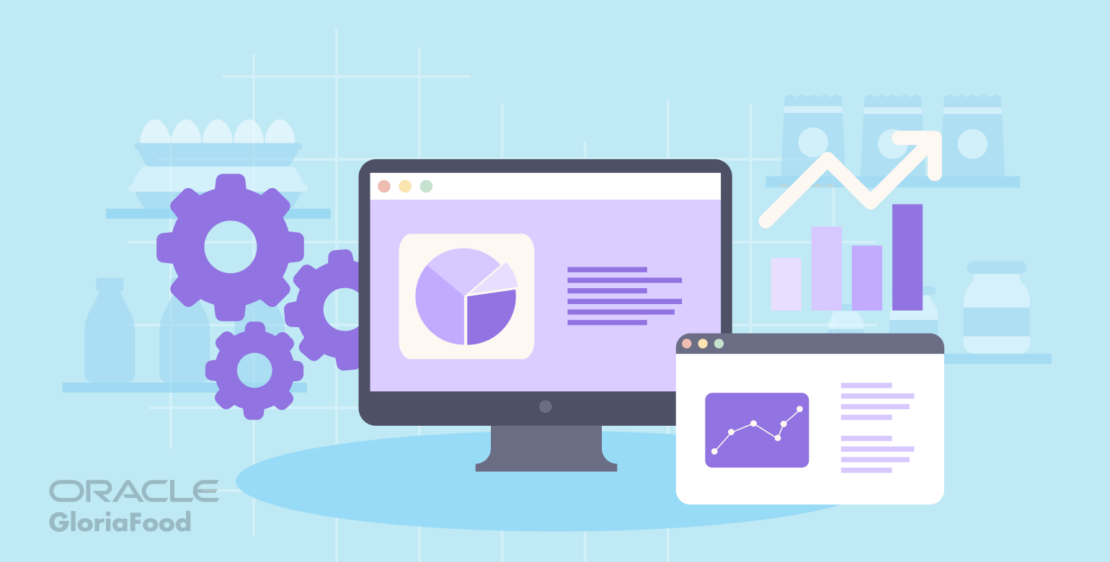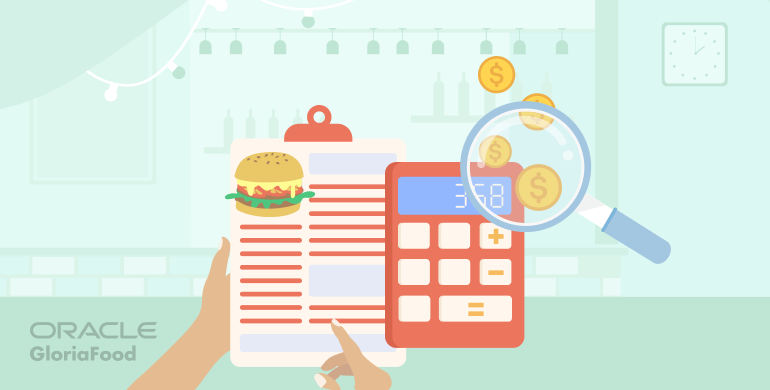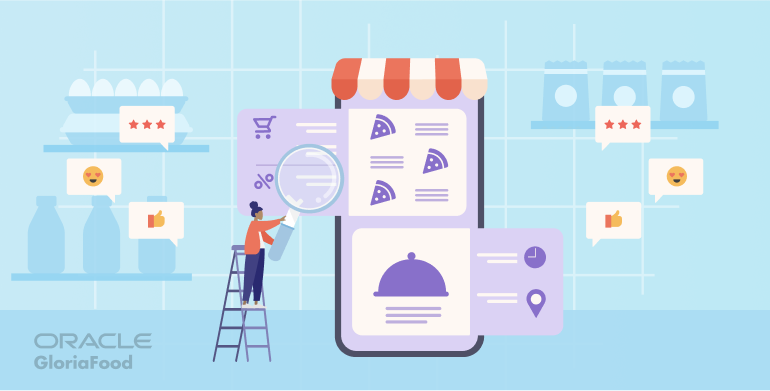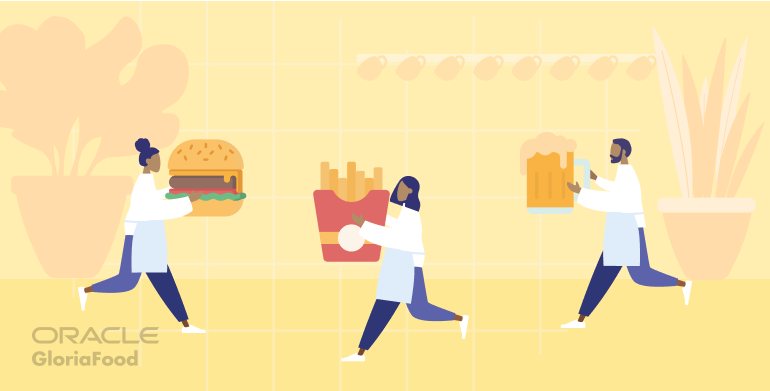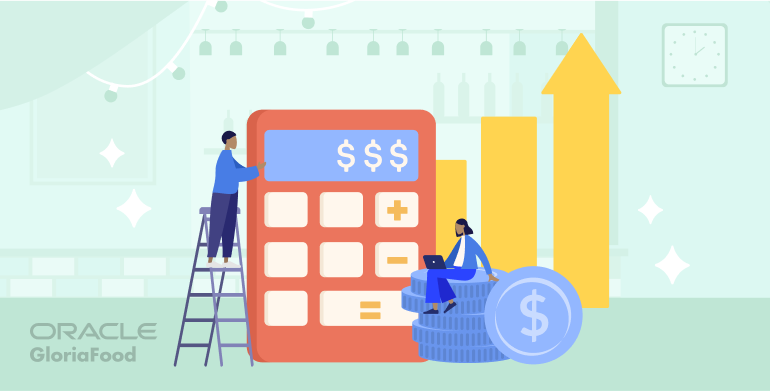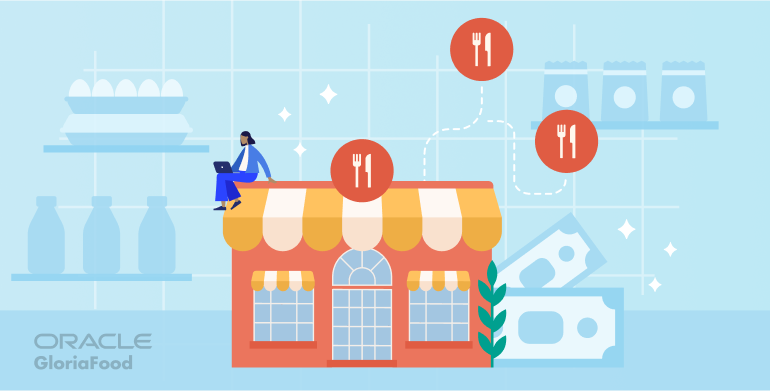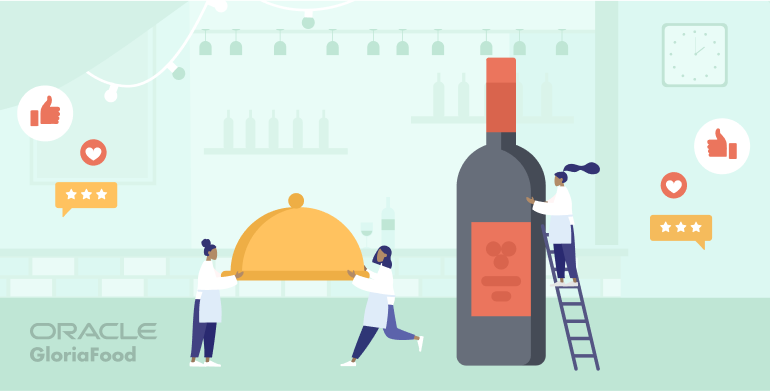- What are KPIs in restaurants?
- Why you need restaurant KPIs to grow your business
- Restaurant profitability KPIs
- 1. Gross profit
- 2. Cost of Goods Sold
- 3. Prime Cost
- 4. Food wasted
- 5. Break Even Point
- 6. Net Profit Margin
- Restaurant employee management KPIs
- 7. Turnover rate
- 8. Server Benchmarks
- 9. Labor cost ratio
- Restaurant customer experience KPIs
- 10. Average table occupancy
- 11. Spend per head
- 12. Revenue per available seat hour
- 13. Canceled reservations
- 14. Guests served
- Restaurant marketing KPIs
- 15. Returning customer percentage
- 16. Website visits
- 17. Online orders
- 18. Engagement
- 19. Conversions
- 20. Positive feedback
How many restaurants are there in your location? And how many are your direct competitors? As a restaurant owner, you surely know the restaurant industry is not only highly competitive but also rather unpredictable.
According to a study done by the U.S Bureau of Labor Statistics, 17% percent of restaurants fail in the first year, and the median lifespan of a restaurant is about 4.5 years. How can you make sure your restaurant successfully sells delicious food, year after year?
By measuring your performance and constantly improving your business according to your findings! Restaurant KPIs (Key Performance Indicators) will help keep you accountable to your goals so you stand out from the competition.
In this article, you will find 20 important restaurant KPIs you should measure for your restaurant:
What are KPIs in restaurants?
Restaurant KPIs are key performance indicators that are composed of metrics your business must aim for. In simple terms, they are data points you must calculate and monitor constantly to ensure you are reaching your established goals.
There are many KPIs for the food industry, from profitability to customer experience, and marketing, but not all relevant for your type of establishment. We’ve created a list with the most commonly used KPIs, so you can pick the ones that your business best.
Why you need restaurant KPIs to grow your business
How can you know if your restaurant is successful? You may think sold-out menu items, great feedback from the customers, or many reservations are all you need. But what if you don’t price your menu items right, and while you sell a lot, you still don’t make a profit?
The only way to know if you are successful is to set and monitor some important restaurant KPIs. Here are the benefits of using KPIs for your business:
- Quickly identify problems: KPIs are usually checked at the end of each month, so if there is a situation, you can easily discover it. For example, let’s say you are producing too much food waste, and it is eating into your profit. Because you threw it out, you won’t see what is lowering your profit until you check the restaurant KPIs;
- Find areas where you can improve: there is always room for growth, and if you choose to implement KPIs, you can identify which areas need work. For example, if you barely reach the number of website visits you set at the start of the month, you must invest more in marketing your business.
Restaurant profitability KPIs
Arguably, the most important KPIs for a restaurant measure its profitability. While you won’t see much profit in the first years of opening a restaurant, it is still important to set business KPIs to help you achieve your goals.
1. Gross profit
Gross profit is used to determine how profitable a restaurant is and can be calculated following a simple formula:
Gross profit = Total revenue – Cost of goods sold
You should aim to have an overall gross profit of 70%, considering that some items will have a lower profit and others a higher one. You should also be aware gross profit doesn’t consider other costs such as utilities or rent.
2. Cost of Goods Sold
The COGS (Cost of goods sold) refers to the price you pay for the actual ingredients that go into your food. While you can’t set a KPI for COGS as you can’t control how producers price their items, you can create a KPI for how you price your menu items to make a profit.
Food cost percentage represents the difference between the cost of making your items and the price your customers pay for them. Follow this formula to determine it:
Food cost percentage = COGS/Total Sales
Successful restaurants will strive for a food cost percentage between 28-35%. Here are some more ways to keep making a profit despite pricey ingredients:
- Make the portions smaller: don’t lose the quality ingredients, just make the portions smaller so you can maintain the price and your profit;
- Have a small menu: longer menus lead to food waste, and customers don’t find them trustworthy. Opt for a small menu so you will have a smaller inventory to manage;
- Manage your food waste: when you already spend a big part of your money on food, you can’t afford to waste it. Find ways to use all parts of an ingredient, so you don’t throw money away.
3. Prime Cost
Prime cost refers to the cost of labor plus the cost of goods sold. It is variable as the price of the ingredients can change, and the number of people that work for you can also differ from month to month. Start determining the prime cost with this formula:
Prime cost = Cost of goods sold + Cost of labor
You will also need to determine the percentage so you can set a KPI. Use this formula:
Prime Cost Percentage = Prime Cost / Total Sales
An ideal prime cost percentage that will ensure your success should be around 60-65%. Try to keep the prime cost low, but don’t sacrifice the quality of the food or the employee’s happiness because you may end up with unhappy customers.
4. Food wasted
Food waste can be easily equivalated to money waste. You pay to buy the ingredients to cook the menu items, but you are bleeding money if they aren’t bought. There are countless reasons you are producing too much food waste:
- Portions are too big: if clients often leave food on their plates, you could be serving them too much. Prevent food waste by making the portions smaller;
- Wrong orders: prevent food waste by implementing an efficient online ordering system that will ensure there are no human errors during the ordering process;
- Too much food with a fast expiration date: invest in an inventory management system that will alert you when your ingredients are about to go bad and when you need to purchase more.
You can calculate your food waste percentage by using the following formula:
Food waste percentage = Weight of food wasted / Total food purchased
You should strive for a very small number, but don’t get discouraged, it is often impossible to avoid some food waste.
5. Break Even Point
Break Even Point is essential when opening a new restaurant or location. It will help you determine how much time and sales you need to cover the initial investment. In other words, by calculating the break even point, you determine when your restaurant will become profitable.
To calculate the break even point, use this formula:
Break Even Point = Total Fixed Costs / ((Total Sales – Total Variable Costs)/Total Sales)
Don’t set unattainable KPIs, most restaurants reach their break even point in about two years. Use this KPI to keep you accountable when making big investments. For example, would buying a professional frying machine help you serve more clients in a day? Then it may be worth it.
6. Net Profit Margin
Net Profit Margin represents the profit you are left with after all the costs are considered. While the average profit margin for restaurants is between 2-6%, the net profit margin can vary greatly between countries, locations, and niches. Here is how to calculate it:
Net profit margin = (Total revenue – Total expenses)/Total Revenue
Restaurant employee management KPIs
Employees are the backbone of your business, and your restaurant’s success depends on their productivity. Therefore, you need to create some KPIs that measure their productivity but also some that measure their happiness.
7. Turnover rate
In 2019, the employee turnover rate was as high as 75%. The turnover rate measures the frequency at which employees leave a job at your restaurant. Many reasons can lead to a high turnover rate:
- Seasonal staff: students usually work during their free periods in restaurants and leave when school starts;
- Upward mobility: to get a better job in the restaurant industry, many employees move to different restaurants;
- Bad management: if employees don’t feel heard and understood by the managers, they often leave;
- Bad working conditions: working too many hours, not enough breaks, poor pay, etc. are all reasons people seek better employment;
To calculate your turnover rate, choose a period, such as a month or a year, and use this formula:
Turnover rate = Number of employees that left your restaurant / Average number of employees
An ideal turnover rate will be between 0-25%, and anything above should be a cause for improvement.
8. Server Benchmarks
Employees can make or break your business, so choosing the ones that help your restaurant grow is essential. Here are two measurements you can implement as restaurant KPIs to identify if a server is doing a good job:
- Per-Person Average: refers to how many people did a specific server help. It can be calculated by using the following formula: Per-Person Average = Total server sales / Total Number of Guests served by server;
- Server Errors Per-Guests: mistakes are only human, but they should be kept to the minimum. Here is how to measure the error rate: Server Errors Per-Guests = Total number of server errors / Total number of items wrung in.
9. Labor cost ratio
Labor cost refers to all expenses related to employee wages, benefits, health insurance, and taxes. The labor cost ratio shows you the relationship between the labor costs and your total revenue. Use this formula to calculate it:
Labor cost ratio = Labor costs/Sales
An average labor cost ratio is around 35%, but you must find the right equilibrium for your business. While you must ensure you make your profit, you must give workers fair wages to prevent employee turnover.
Restaurant customer experience KPIs
Are you able to serve as many clients as you need to keep your business profitable? Are you making enough efforts to attract customers to your restaurant? Find out by setting restaurant KPIs related to the customer’s experience.
10. Average table occupancy
Does your restaurant have too many seats that don’t get fully occupied? Find out by monitoring the average table occupancy and then take action, such as implementing an efficient table reservation system.
To calculate this restaurant KPI, try this formula over a selected period:
Average table occupancy = Number of occupied tables / Total number of tables
If you need help attracting more clients, it is time to install the online ordering system from GloriaFood that allows you to offer simple table reservations directly on your website. Check out this demo website to see how easy it is to reserve a table and even order ahead for added efficacy.
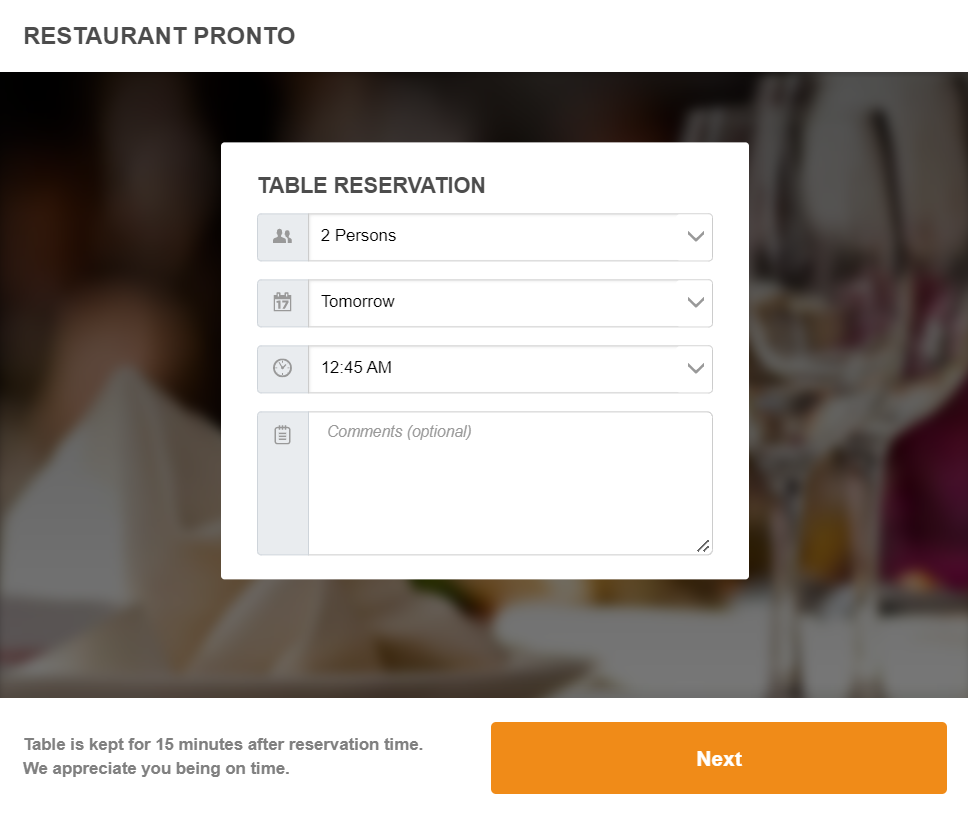
11. Spend per head
This metric helps you find how much a customer spends on average at your restaurant. You can identify when business is slower and use promotions to get more clients in those time slots.
Spend per head = Total revenue/Number of customers
Implementing promotions that attract more customers is easy with the online ordering system from GloriaFood. After you sign up, fill in the required information and create a menu. Then, go to admin -> Marketing -> Promotions and choose from the tried and tested promotion templates available.
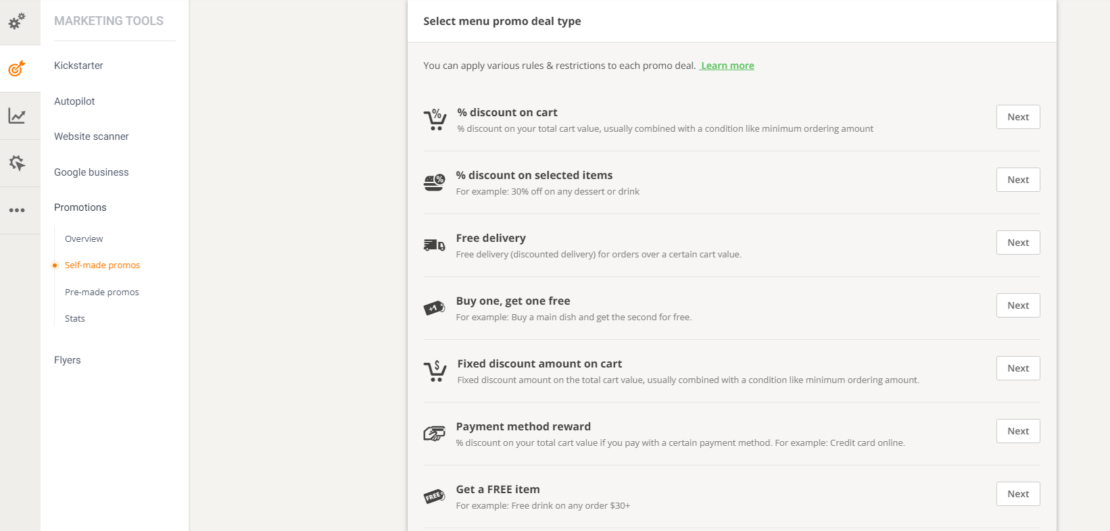
You can customize the promotion text and photo and delve into more advanced settings, such as making the promotion available only between certain hours or for returning clients or specific delivery zones.
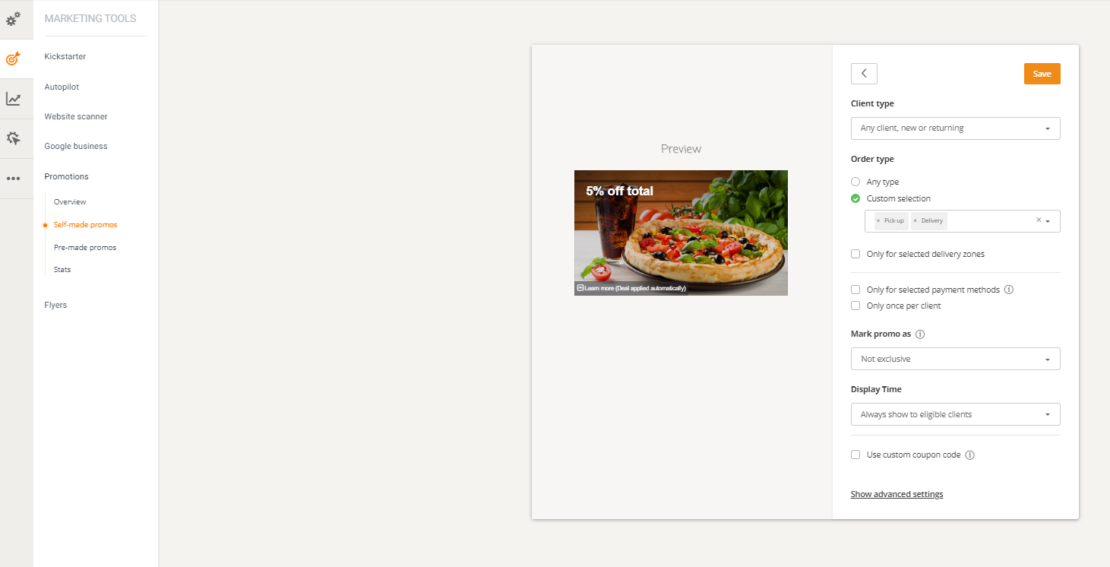
12. Revenue per available seat hour
By monitoring this restaurant KPI, you can find out if you have seats that stand open for long and you need to attract more customers, or if you have seats that don’t generate much revenue, so you must increase table turnover.
Use this formula to calculate:
Seat hours = Number of seats x Hours Open
Revenue per available seat hours = Revenues / Seat hours
13. Canceled reservations
While canceled reservations are unavoidable – things happen that are out of people’s control – you should strive to give people a seamless table reservation experience, so you will have fewer canceled reservations.
You can do so by enabling the table reservations feature from GloriaFood. The great part is the system updates immediately after somebody cancels and frees the table for other potentially interested customers.
Go to admin -> Setup -> Services & Opening hours -> Table Reservation to allow clients to easily book a table.
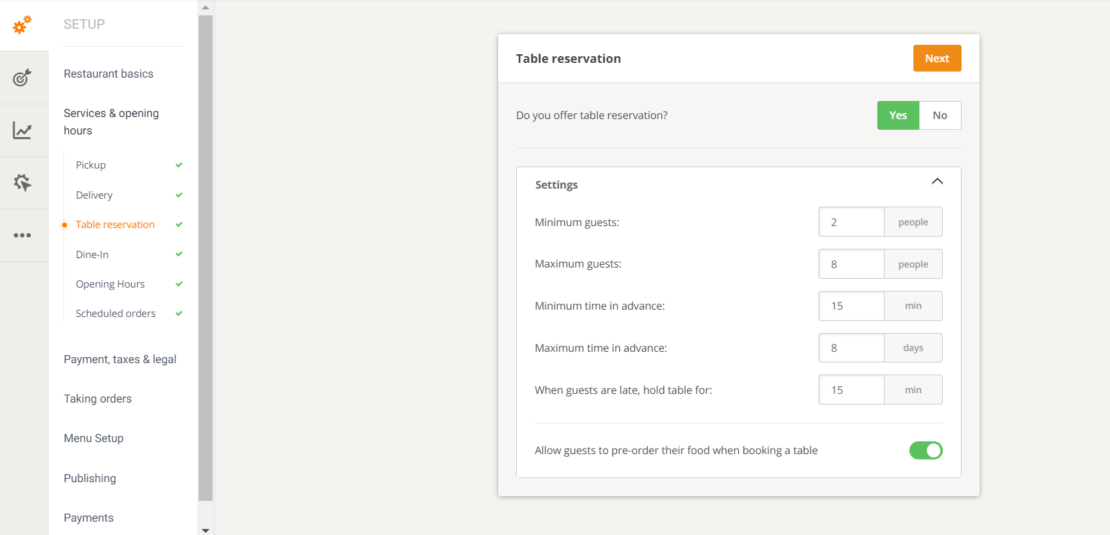
14. Guests served
By monitoring the number of guests served, either daily, monthly or yearly, you can discover your customer’s preferences and try to adapt so you can encourage more to visit or order from your place.
For example, suppose you identify that Monday is your slowest day. In that case, you can implement a “free delivery” or “free item” promotion only available on the first day of the week to attract more customers.
Restaurant marketing KPIs
Marketing is essential to make your business known and stand out from the competition. You can’t afford to invest in strategies that don’t work, you need to be able to identify the right channels fast. With restaurant marketing KPIs, you will be able to discover the areas which could use improvement.
15. Returning customer percentage
Your restaurant depends on return customers to be successful. You must make customer retention rate a restaurant KPI so you will know when you should invest more in marketing your business to people that already visited or ordered from your place.
To find the customer retention rate, use this formula:
Customer retention rate = ((Number of customers at the end of the period – number of customers acquired during the period) / Number of customers at the start of the period) x 100
An average customer retention rate for restaurants that succeed is about 30%, but you should aim to increase it monthly.
A great way to increase the number of return clients is email marketing. The Autopilot feature from GloriaFood allows you to set up email campaigns once and then reap the benefits while they are being sent on autopilot.
The email campaigns are targeted at previous clients to encourage them to visit or order from your restaurant again. Find out more about Autopilot from this video:
16. Website visits
All your marketing efforts online start and end with your website. It is essential to have an SEO and sales optimized website that will bring more visits because it will rank on the first page of Google for a keyword related to your food niche.
You don’t have to invest all your marketing budget on it, you can get a restaurant website with GloriaFood. Just go to admin -> Setup -> Publishing -> Sales Optimized Website, and we will help you generate a website that you can personalize with texts and images, and that is intuitive to use for any visitor.
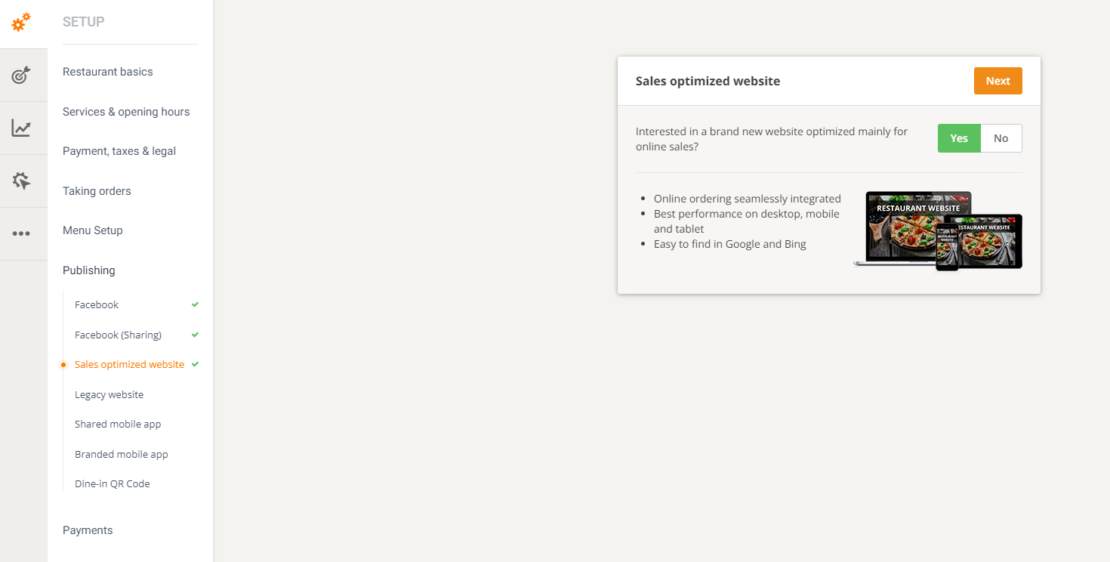
If you use the online ordering system from GloriaFood, monitoring restaurant marketing KPIs is easy with the Reporting module. Go to admin -> Reports -> Website funnel to see how many websites visits your restaurant has and where they are coming from.
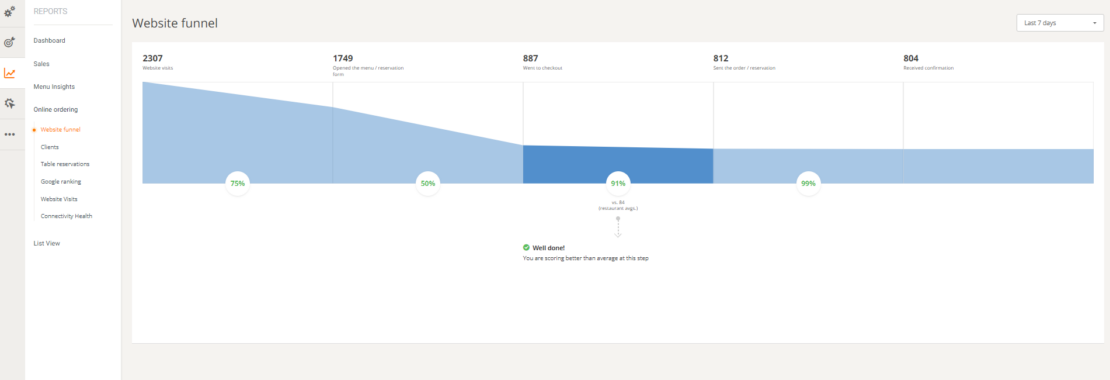
Easily monitor your restaurant‘s online KPIs
Install an online ordering system with a built-in reporting module
17. Online orders
In this digital age, you must offer clients the option to eat your delicious food from the comfort of their own homes. An online ordering system opens new possibilities for revenue and increases the number of repeat customers.
To see if your business is growing, stagnating, or slowing down, you must make the number of online orders a restaurant KPI. You can easily monitor it with the Reports module by accessing the Overview section, where you can see:
- The number of accepted orders/reservations;
- The value of orders/reservations.
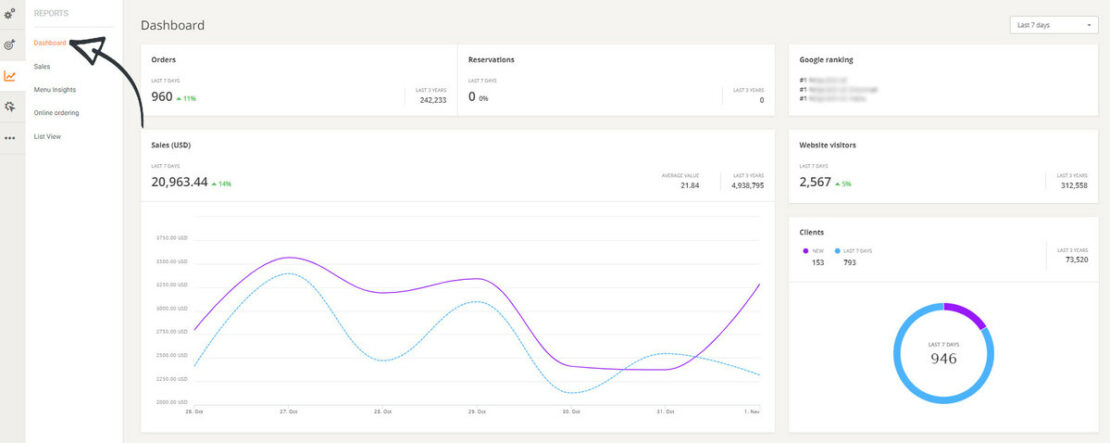
18. Engagement
Social media is an important part of a restaurant’s marketing plan. While you put in the effort to come up with great photos, captions, and new ways to interact with your followers, you must also implement restaurant business KPIs that monitor your results. Here are some metrics you should be aware of:
- Likes
- Comments
- Shares
- Reach
- Number of followers
- Tags
19. Conversions
The goal of your marketing efforts should be to encourage conversions. In other words, all your texts should include strong calls to action that determine people to turn from simple followers or visitors to returning clients.
You can easily see the number of conversions by accessing the Website funnel section of your Reporting module and other relevant information such as:
- The number of people that opened your menu or reservation form;
- The number of people that went to checkout;
- The number of people that sent the order or reservation;
- The number of people that received confirmation.
20. Positive feedback
To get positive feedback, you must give clients access to a place where they feel comfortable reviewing your restaurant. Here are a few examples:
- Google My Business;
- Facebook;
- Review platforms such as Yelp and TripAdvisor;
- A dedicated section on your website.
Try to dedicate at least an hour once two to three days to checking your online reviews and replying to them, even if there are negative. This will allow you to constantly monitor them and develop new ways to encourage positive reviews if you only receive a few.
Conclusion
Setting and monitoring restaurant KPIs is the only way to know if your restaurant is successful. By having a restaurant KPI for every part of your business, from profitability, and marketing to customer experience and employee satisfaction, you ensure you are constantly improving your business and fastly identifying any issues.
- What are KPIs in restaurants?
- Why you need restaurant KPIs to grow your business
- Restaurant profitability KPIs
- 1. Gross profit
- 2. Cost of Goods Sold
- 3. Prime Cost
- 4. Food wasted
- 5. Break Even Point
- 6. Net Profit Margin
- Restaurant employee management KPIs
- 7. Turnover rate
- 8. Server Benchmarks
- 9. Labor cost ratio
- Restaurant customer experience KPIs
- 10. Average table occupancy
- 11. Spend per head
- 12. Revenue per available seat hour
- 13. Canceled reservations
- 14. Guests served
- Restaurant marketing KPIs
- 15. Returning customer percentage
- 16. Website visits
- 17. Online orders
- 18. Engagement
- 19. Conversions
- 20. Positive feedback
